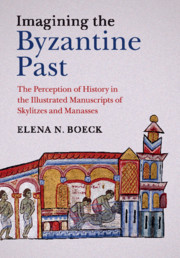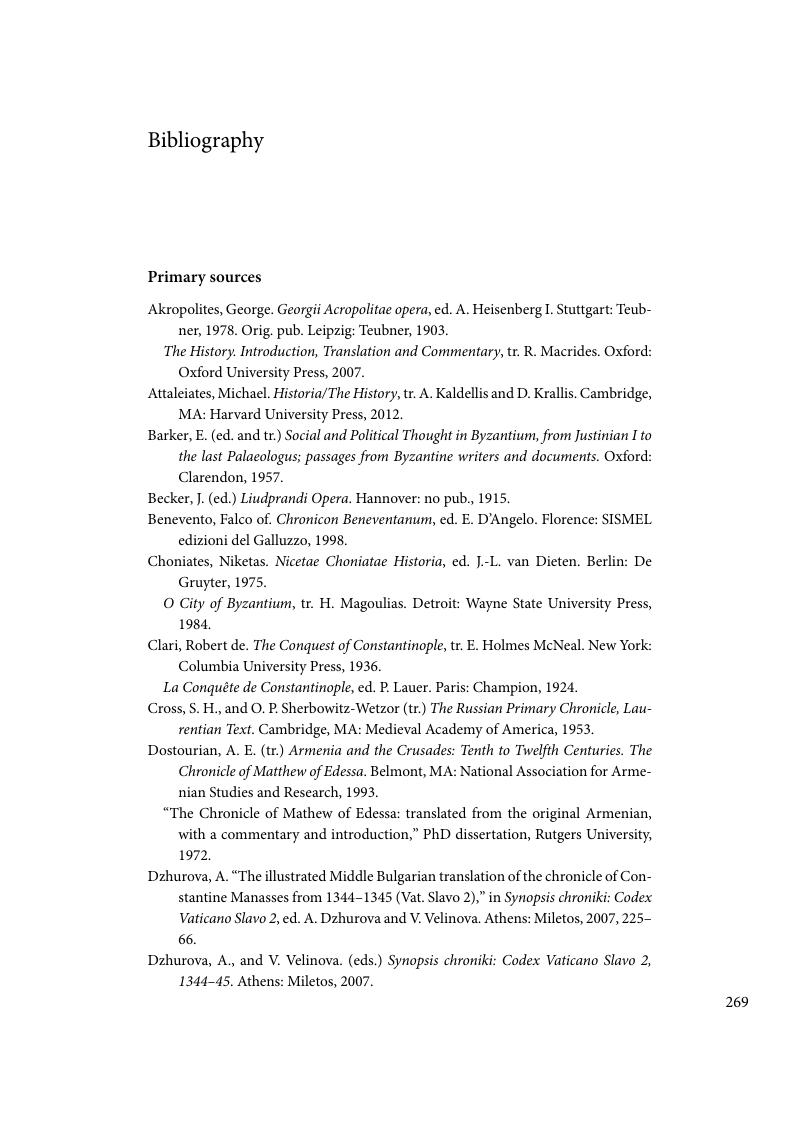 Imagining the Byzantine Past
Imagining the Byzantine Past Book contents
- Imagining the Byzantine Past
- Dedication
- Imagining the Byzantine Past
- Copyright page
- Contents
- Plates
- Figures
- Book part
- Note on the text
- Glossary
- Frontispiece
- Introduction
- 1 Mystery, history, and materiality
- 2 Engaging Byzantium, enraging Byzantium: Sicily, Bulgaria, and the contestation of Constantinopolitan preeminence
- 3 Narrative emplotments and patterns of prioritization: analyzing visual codes and structural modes
- 4 Amplification as dialogue: the link between design and patronage
- 5 Iconoclasm as narrative experiment: religion, politics, and memory
- 6 A headstrong case for getting ahead: scrutinizing narratives of decapitation
- 7 Constantinople: story spaces or storied imperial places
- Afterword
- Book part
- Bibliography
- Index
- References
Bibliography
Published online by Cambridge University Press: 05 September 2015
- Imagining the Byzantine Past
- Dedication
- Imagining the Byzantine Past
- Copyright page
- Contents
- Plates
- Figures
- Book part
- Note on the text
- Glossary
- Frontispiece
- Introduction
- 1 Mystery, history, and materiality
- 2 Engaging Byzantium, enraging Byzantium: Sicily, Bulgaria, and the contestation of Constantinopolitan preeminence
- 3 Narrative emplotments and patterns of prioritization: analyzing visual codes and structural modes
- 4 Amplification as dialogue: the link between design and patronage
- 5 Iconoclasm as narrative experiment: religion, politics, and memory
- 6 A headstrong case for getting ahead: scrutinizing narratives of decapitation
- 7 Constantinople: story spaces or storied imperial places
- Afterword
- Book part
- Bibliography
- Index
- References
Summary

- Type
- Chapter
- Information
- Imagining the Byzantine PastThe Perception of History in the Illustrated Manuscripts of Skylitzes and Manasses, pp. 269 - 309Publisher: Cambridge University PressPrint publication year: 2015


